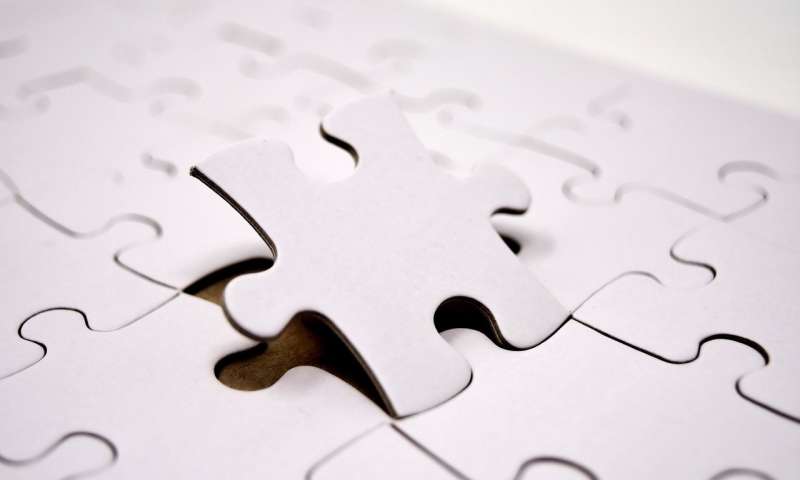Brain imaging study reveals new clues about PTSD in victims of terrorist attacks

The terrorist attacks committed in Paris and Saint-Denis on November 13, 2015 have left lasting marks, not only on the survivors and their loved ones, but also on French society as a whole. A vast transdisciplinary research program, the 13-Novembre Project, is co-directed by Francis Eustache, neuropsychologist and director of the Inserm Neuropsychology and Imaging of Human Memory Laboratory and Denis Peschanski, historian and CNRS research director. It seeks the ongoing construction and evolution of the individual and collective memory of these traumatic events and to improve our understanding of the factors that protect against the development of post-traumatic stress disorder (PTSD).
Part of this program is a brain imaging study called Remember, which is focused on the cerebral networks implicated in PTSD. Its findings will be published in the journal Science on February 14, 2020. This study, which is sponsored by Inserm and led by Inserm researcher Pierre Gagnepain, shows that the untimely resurgence of intrusive images and thoughts in PTSD patients—a phenomenon long attributed to a deficiency of memory—is also linked to a dysfunction of the brain networks that control memory. The researchers expect that these findings will lead to the identification of new treatment options for PTSD sufferers.
Understanding more about the cause of intrusive memories
According to the traditional models of PTSD, the persistence of painful intrusive memories is caused by memory dysfunction—a bit like a scratched record playing the same fragments of our memories over and over again. From the anatomical point of view, such dysfunctions are particularly visible in the hippocampus—a key region for the formation of memory.
In addition, patients' attempts to suppress their traumatic memories have long been considered an ineffective mechanism. Instead of confronting these painful images in order to leave them in the past, the way they were trying to repress or drive them out was seen more as a negative strategy, intensifying the intrusions and worsening the situation of those with PTSD.
The brain imaging study published in the journal Science challenges some of these ideas, hypothesizing that the untimely resurgence of intrusive images and thoughts could also be linked to a dysfunction of the brain networks implicated in controlling memory (going back to the previous metaphor of the record player, the turntable arm is not working correctly). "These control mechanisms act like a regulator of our memory and are engaged in halting or suppressing the activity of the regions associated with memories, such as the hippocampus," Pierre Gagnepain explains.
Together with his colleagues, Gagnepain worked with 102 survivors of the Paris attacks, 55 of whom had PTSD. Also involved in the study were 73 people who had not been exposed to the attacks.
In order to model the resurgence of intrusive memories observed in the PTSD of these volunteers without putting them through the ordeal of viewing the shocking images of the attacks, the scientists opted for a brain imaging research protocol based on the Think/No-Think method (see box).
The aim of this method is to create associations between a cue word and an unrelated everyday object (for example, the word chair with the image of a ball), in order to reproduce the presence of an intrusion when confronted with the cue word. "Then we can study the capacity of the participants to drive and suppress from their mind the intrusive image that emerges against their will when confronted with the cue word," says Alison Mary, researcher and co-author of the article.
The researchers looked at the brain connections between the control regions located in the frontal cortex (at the front of the brain), and the memory regions, such as the hippocampus. They hoped to identify any differences among the three groups of participants (the first not exposed to the attacks, the second exposed but without PTSD, and the third also exposed but with PTSD).
The results show that the participants with PTSD present a deficiency of the mechanisms that suppress and regulate the activity of the memory regions during an intrusion (particularly the activity of the hippocampus).
Conversely, the functioning of these mechanisms is to a large extent preserved in the individuals without PTSD, who are able to fight the intrusive memories. "In our study, we suggest that the memory suppression mechanism is neither intrinsically poor nor responsible for the intrusions, as was previously believed. However, its dysfunction is. If we use the analogy of a car's brakes, it is not the act of applying them—or in our case the act of suppressing the memories—that poses a problem, but the fact that the braking system is faulty, which leads to their overuse," explains Pierre Gagnepain.
Many of the current PTSD therapies are aimed at recontextualizing the problematic memories, at making the patients aware that these memories belong in the past, and at reducing the feeling of fear that they generate.
Designing new interventions which are disconnected from the traumatic events and which stimulate the control mechanisms identified in this study could be a useful addition in training patients how to implement more effective mechanisms of suppression. "The current treatments all involve confronting the trauma, which is not always easy for the patients. It could be imagined that this type of task stimulates the mechanisms of suppression, thereby facilitating the processing of the traumatic memory in the traditional therapies," the researchers conclude.
More information: "Resilience after trauma: The role of memory suppression" Science (2020). science.sciencemag.org/cgi/doi … 1126/science.aay8477
No comments:
Post a Comment